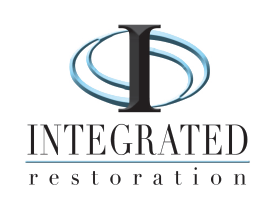What to Do If Your Ceiling Starts Leaking: A Step-by-Step Guide
A ceiling leak is more than just an inconvenience—it can lead to significant structural damage, mold growth, and costly repairs. Whether you’re a homeowner or a commercial property owner, knowing what to do when you spot a leak can save you from major headaches. Here’s a step-by-step guide to addressing the issue quickly and effectively.
Step 1: Identify the Source of the Leak
Before you can stop the leak, you need to determine where the water is coming from. Possible sources include:
Roof leaks – Damaged shingles, flashing, or clogged gutters can cause water to enter.
Plumbing issues – A burst pipe or leaking supply line could be dripping down.
HVAC system – Condensation buildup from an air conditioning unit could be to blame.
For homeowners: Learn more about residential water damage restoration.
For commercial property owners: See how our commercial water damage restoration services can help.
Step 2: Minimize the Damage
Act fast to prevent further damage:
Move furniture and valuables out of the affected area.
Use buckets or towels to catch dripping water.
Poke a small hole in the ceiling if water is pooling—this can prevent a larger collapse.
Turn off the water supply if the leak is plumbing-related.
If your property has already suffered significant damage, Integrated Restoration offers 24/7 emergency services to help mitigate the problem before it worsens.
Step 3: Dry the Affected Area
Leaving moisture untreated can lead to mold growth within 24–48 hours. To prevent this:
Open windows and use fans or dehumidifiers to dry the area.
Remove wet materials like drywall, insulation, or carpets that cannot be fully dried.
Mold risk: If moisture lingers too long, it can cause mold growth, which presents serious health hazards. Check out our mold remediation services to ensure your property stays safe.
Step 4: Determine if Repairs or Replacement Are Needed
Not all ceiling leaks require major repairs, but some may demand extensive work. Consider:
Minor leaks – If caught early, simple drywall patching or shingle replacement may be enough.
Extensive damage – If structural elements are affected, sections of the ceiling, insulation, or roofing may need replacing.
Not sure what’s needed? Our team can assess the damage and recommend the best solution. Contact us today for a consultation.
Step 5: Prevent Future Leaks
The best way to avoid costly repairs is to take preventive measures:
Inspect your roof and plumbing regularly to catch issues before they escalate.
Clean your gutters to prevent water from backing up.
Seal any cracks in walls, ceilings, or around pipes.
For businesses, developing a water damage response plan can minimize disruptions and losses. Learn how we help commercial properties stay protected.
When to Call a Professional
If your ceiling leak is persistent, causing mold growth, or affecting a large portion of your property, professional restoration is essential. Integrated Restoration specializes in both residential and commercial water damage restoration—we respond 24/7 to minimize damage and restore your space efficiently.
Don’t wait for the problem to worsen! Schedule an inspection today to protect your home or business from further damage.
By following these steps and staying proactive, you can minimize water damage risks and ensure a safe, dry environment. If you need expert help, Integrated Restoration is here for you—whether you own a home or manage a commercial building.

